TL;DR
➡ Hair loss is identified when your scalp loses more hair than it reproduces and balding in hairlines becomes visible.
➡ It is possible to stop hair loss, especially with early diagnosis, by consulting your doctor on the first signs of balding areas.
➡ The most common methods are changing your lifestyles, such as stopping smoking, reducing alcohol, following a proper diet and exercise, or using hair regrowth medications such as Finasteride or Minoxidil.
Nobody wants to lose their hair; it’s the part of their body that completes their charisma.
Yet, at some point in our lives, most of us notice our hair thinning and our hairline receding. That is entirely normal.
Nothing’s meant to last forever, right? You can just accept the fact that you’re going to end up like your elderly relatives and move on.
Or, you can do something to stop it.
In today’s article, I will explain to you the possible ways of doing it so that you can see how achievable it is:
Table of Contents
But before we dig deeper into what you can do to stop hair loss, it’s better if we know what hair loss actually is:
What Is Hair Loss?
Hair loss is the condition of losing hair from some regions of the body and not having the lost amount grow back. It can affect men and women at any age and can be caused by a number of factors.
However, the majority of hair loss cases are related to androgenetic alopecia, which most men and women go through in their adult lives.
Mind you, I’ve said “not having the lost amount grow back” because hair loss happens if:
▶️ You consistently lose more hair than you can grow in a specific time,
▶️ Or you’re unable to regrow the hair you’ve lost.
I know both sound the same, so let me explain:
💡 When you get down to the causes of hair loss, you’re either going to end up with a variable reducing your hair growth or a variable that is increasing the rate you’re losing hair.
So, while a part of the methods we’ve included on this list will focus on decreasing your hair loss rate, the other part of them will focus on increasing your hair growth rate.
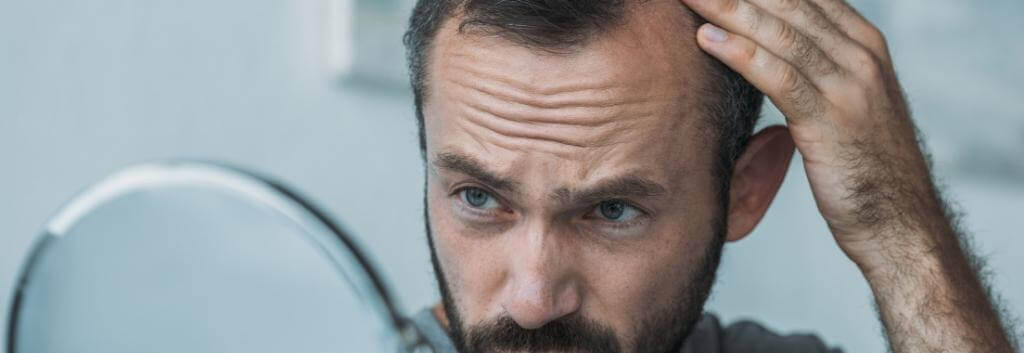
What Is NOT Considered Hair Loss?
According to the American Academy of Dermatologists, it is normal to lose 100 strands of hair per day.
Shedding some of your hair is part of your hair growth cycle. And since there are more than 100,000 hair follicles, it does not make any difference in appearance.
However, each person is unique and should be personally examined to find out whether their hair loss is normal or not.
Better safe than sorry, right?
Is It Possible to Stop Hair Loss?
You will keep losing a certain amount of hair for the rest of your life, and that’s the truth.
However, you can increase your new hair growth rate or decrease your hair loss rate to keep things in balance and protect your appearance.
So yes, it is totally possible to stop visible hair loss.
Are you looking to regain the hair you’ve already lost?
Read 34 Ways to Regrow Lost Hair 👈
16 Ways to Stop Hair Loss and Prevent Balding
It’s crucial that you understand your body doesn’t intentionally push the hair out of your scalp.
Given the right genetics and the right lifestyle choices, it will do everything in its power to stop hair loss.
So, you can and should help your body protect your hair and battle balding.
Although there are a number of things you can do to help your body, there are also a few unhealthy habits you can remove from your daily life that’ll both help your scalp and your overall health, which is what we’ll start with:
1 – Stop Smoking
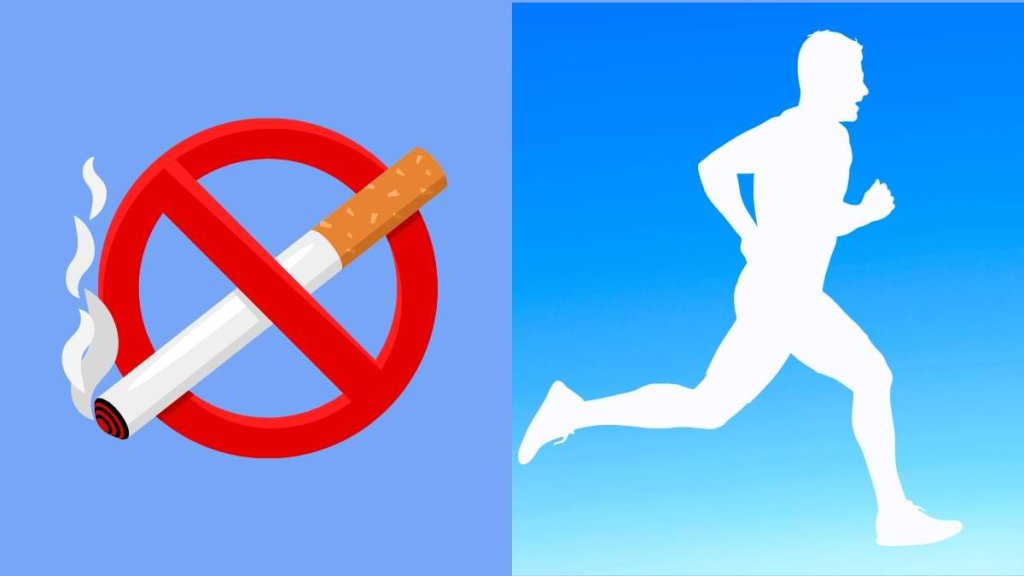
There are dozens of reasons for you to quit smoking. And you’re possibly aware of almost all of them unless you haven’t been watching TV or using the internet for the last 50 years.
If you’re experiencing some sort of hair loss and are a regular smoker, you now have one more reason to quit. As we’ve previously explained, smoking will adversely affect blood circulation in your body and accelerate hair loss.
If you can, you should quit smoking and avoid passive smoking to help your body battle hair loss, in addition to other benefits.
2 – Reduce Alcohol Consumption
A frequent drinking habit can cause or accelerate hair loss as it leads to dehydration throughout your body and, therefore, your scalp.
In addition to dehydration, regular consumption of alcohol also leads to poor liver function, resulting in more and more toxins entering your body, which leads to dry skin, dandruff, and inflammation.
Cutting back on drinking can help you lighten the adverse effects of drinking on your body and your hair.
When you are consuming alcohol, at least make sure you drink plenty of water before and after alcohol consumption to minimize the adverse effects.
3 – Proper Diet
In the 21st century, the eating habits of the average person have dramatically worsened.
There is a widespread tendency to consume fast food for meals or just skip some meals altogether. A considerable part of our daily diet consists of carbs and proteins.
Nutrition deficiencies, as we’ve mentioned before, can have a huge impact on hair growth and accelerate hair loss. A bad eating habit might be a significant contributor to your balding.
I’m not asking you to completely change your habits and adapt to a new, healthier lifestyle, although that would be great. Instead, you can ensure you’re getting the right amount of nutrients by introducing new items to your diet or replacing some of the existing items with healthier alternatives.
The Mediterranean diet, which consists of raw vegetables and fresh herbs and is rich in phytochemicals, can reduce the risk of AGA, according to a study. Try to consume raw vegetables and fresh herbs at least 3 times a week, in the form of salads, for example, to see the results of this diet.
Also, try to increase the number of proteins, which are the building blocks of hair.

4 – Physical Exercises
Yoga and other forms of exercise can help you eliminate a variety of reasons for hair loss, both mentally and physically.
Before suggesting a routine, I’d like to tell you a bit more about the benefits of yoga and exercising around hair loss:
Reduces stress levels
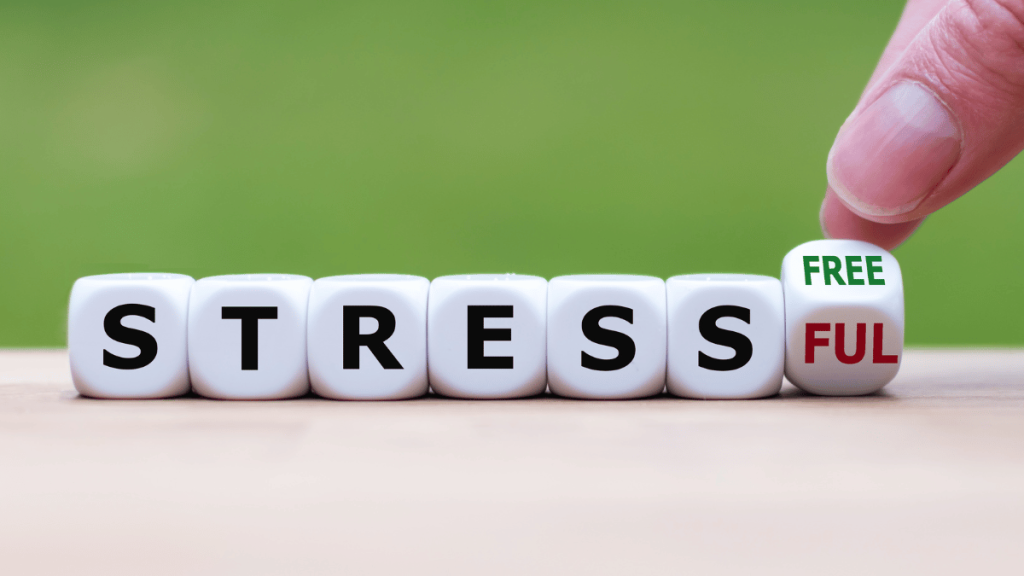
As we’ve said in the previous chapter, stress highly contributes to hair loss by causing two common types of hair loss: alopecia areata and telogen effluvium.
Physical activity of any sort helps your body produce more endorphins and serotonin, which are the feel-good neurotransmitters of your body.
Exercise can also improve your sleep, deprivation of which causes stress, by reducing sleep onset (the time it takes you to fall asleep.)
Also, regular exercise will improve your overall mood by adding to your self-confidence and helping you relax.
Improves circulation
Low circulation can cause hair loss by depriving your scalp and hair follicles of oxygen and nutrients in the blood.
When you exercise, your heart beats faster, pumping more blood into every bit of your body and flushing blood through your arteries. A long-term habit of exercising, whether light or intense, can help you maintain a good level of cardiovascular activity and improve blood flow to your scalp.
If you’re regularly exercising, great! If not, try to get into exercising by starting with something light and something you enjoy. Walking, jogging, playing pickup sports, and dancing are a few suggestions you can easily adopt.
5 – Improving Sleep Quality and Quantity
It is no news that being deprived of enough sleep can have negative impacts on the body.
People who sleep 6 hours or less per night are much more likely to experience hair loss compared with those who sleep for 7-8 hours per night.
This is due to the decreased release of human growth hormone (HGH), which plays an important role in maintaining good health and promoting hair growth during sleeping time.
“Sufficient levels of HGH in our bodies are needed not only to maintain normal physiological function but also for optimal physiological processes, including hair production in the follicles.”
Journal of Cosmetic Dermatology
Improving your sleeping quality through natural remedies can help in preserving your natural hair.
6 – Hair/Scalp Massaging
It’s always nice to sit back/lay down and enjoy a good massage. If you’re experiencing hair loss, you now might have another reason to enjoy regular massages.
A 2016 study has found that regular massages around the scalp lead to thicker hair (results shown in the chart below). This is mainly because the massage will stretch the cells of hair follicles and make them thicker, and thicker hair follicles will produce thicker hair.
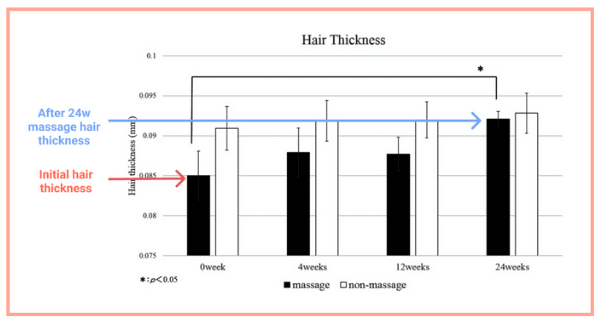
Also, regular massages will drastically improve blood circulation throughout your scalp, which will boost hair growth.
You can massage your scalp by applying light pressure to the skin with your fingertips; 5-10 minutes would be sufficient. You can massage your scalp when you’re relaxed sitting, lying on the bed, or even in the shower while washing your hair.
7 – Treat Your Hair Gently
Traction Alopecia is caused by pulling your hair continuously. It is generally seen in people wearing hair tightly pulled back, such as a ponytail, bun, and slick back.
Over time, combined with heat and chemicals included in some styling and care products, pulling the hair may lead to permanent damage to hair follicles.
In addition, your hair is very fragile when it is wet. Thus, brushing the wet hair requires much more attention.
Being aware of these facts, just be gentle with your hair and don’t brush or comb your hair hard.
You may learn the correct way of combing or brushing your hair. The type of brush and technique will also have a significant role in protecting hair follicles.
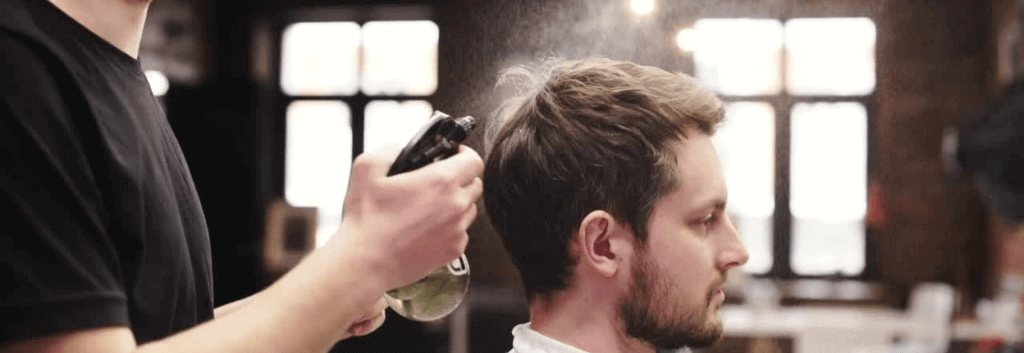
8 – Steer Away from Chemicals
Metal and non-metal toxins are known to cause alopecia.
These toxins range from dietary supplements, such as selenium, to prescription drugs, such as colchicine, which is used to treat gout and Behçet’s disease. Even insecticides have toxic substances, such as boric acid, which is detrimental to hair.
Industrial workers are especially at the highest risk for heavy metal toxin (mercury, thallium) exposure. They had to always wear protective equipment such as respirator masks in order to reduce the amount absorbed into the body.
It is a fact that chemicals are everywhere in our daily lives, from household cleaning supplies to exhaust gases. We need to try to protect ourselves from their exposure as much as we can.
By being careful not to inhale/consume, or apply substances containing toxins, we can prevent hair loss caused by them.
9 – Low-Level Laser Therapy
A number of physical therapies are known to effectively intervene in ongoing hair loss to stop it from progressing.
One of them, laser therapy, also referred to as low-level laser therapy (LLLT), is a process where your scalp is exposed to laser beams, and photons are irradiated into your scalp area.
Compared to other hair loss and regeneration treatments, laser therapy is often considered safer but takes much more time and is frequent (up to several sessions a week) to yield results.
According to a study, subjects having low-level laser therapy for a 24 period exhibited a significant improvement in hair regrowth compared with subjects treated with the fake device (to eliminate the placebo factor) for both the researcher’s and subjects’ self-assessments.
The baseline and 24th week before and after photos are shown in the picture below:
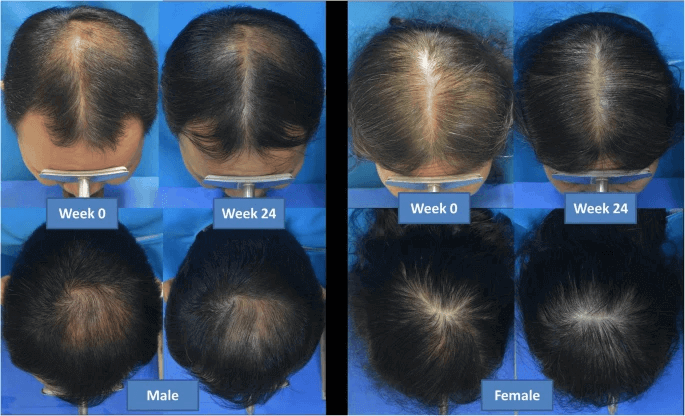
Alternatively, laser caps, a home-use version of LLLT, are also used to achieve the same effect.

10 – (PRP) Platelet-Rich Plasma
You know that the body has the ability to heal itself, right?
So, why don’t we harness this ability? Do you think anything is better than a 100% natural healer?
In FDA-approved PRP treatment, platelets, a component of blood that aids healing, are obtained from a patient’s blood. Then, this plasma is injected into a specific area in the body to accelerate healing.
Then, this plasma is injected into your scalp, where hair loss happens.
According to the research, it can stop and reverse androgenetic alopecia (male and female pattern baldness).
“A significant reduction in hair loss was observed between first and fourth injection. Hair count increased from average number of 71 hair follicular units to 93 hair follicular units.“
The PRP treatment process is as follows:
- Blood is drawn from the body.
- The blood is run through a centrifuge to concentrate the platelets.
- The separated plasma is taken and injected into the target area.
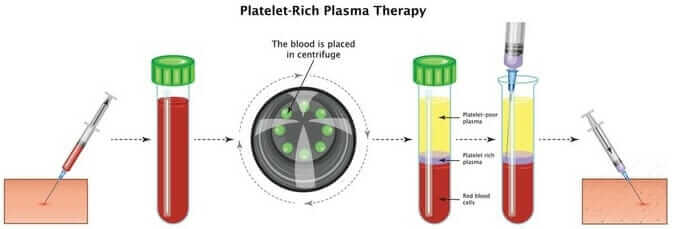
The results of PRP treatment are noticeable after several injections. Only an expert dermatologist could plan PRP treatment and follow the improvement.
The great thing is that the side effects of PRP are very limited because the process is autologous, meaning the substances are obtained from the same person.
Considering its excellent safety profile and relatively low cost, PRP hair treatment is a promising treatment option for patients with thinning hair.
11 – Minoxidil
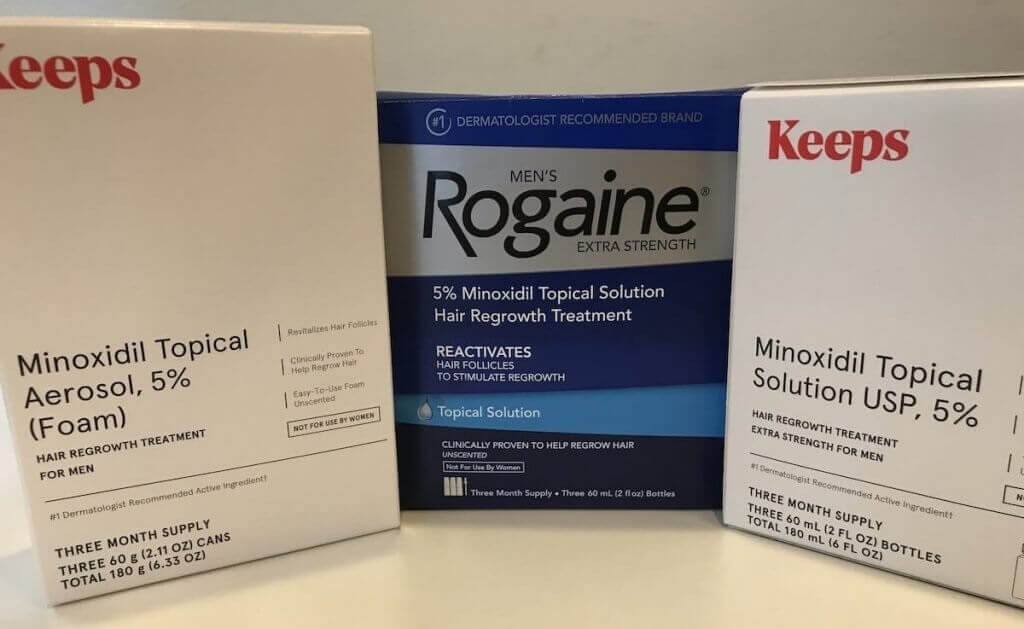
Now, let’s move on to some medications and topical treatments.
Minoxidil was first introduced as an oral drug for hypertension (high blood pressure), but later, it was discovered that some patients saw increased growth in body and facial hair.
Thus, researchers started to study its effects on baldness treatment, and finally, they found out that the same medication used orally could increase hair growth when applied topically.
If you’re not a big believer in the overwhelming positive Amazon reviews of the drug, the FDA-approved drug also has various studies backing its effectiveness.
Minoxidil is a vasodilator, meaning that it can reduce blood pressure by expanding blood vessels and increasing the supply of oxygen and nutrients to tissues. In this case, Minoxidil makes more nutrient-rich blood flow to the hair follicles in your scalp.
Unlike direct physical solutions like hair transplant surgeries, this medication may take from several months up to 1 year or more to see results, so you have to be patient.
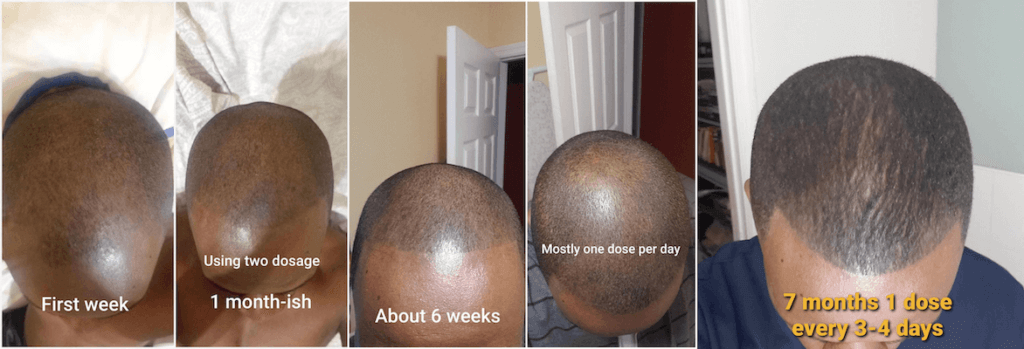
In order not to have any side effects from Minoxidil, it is best used 3 times a day by applying 1 ml of topical solution on the affected area/s twice a day instead of once a day.
12 – Finasteride
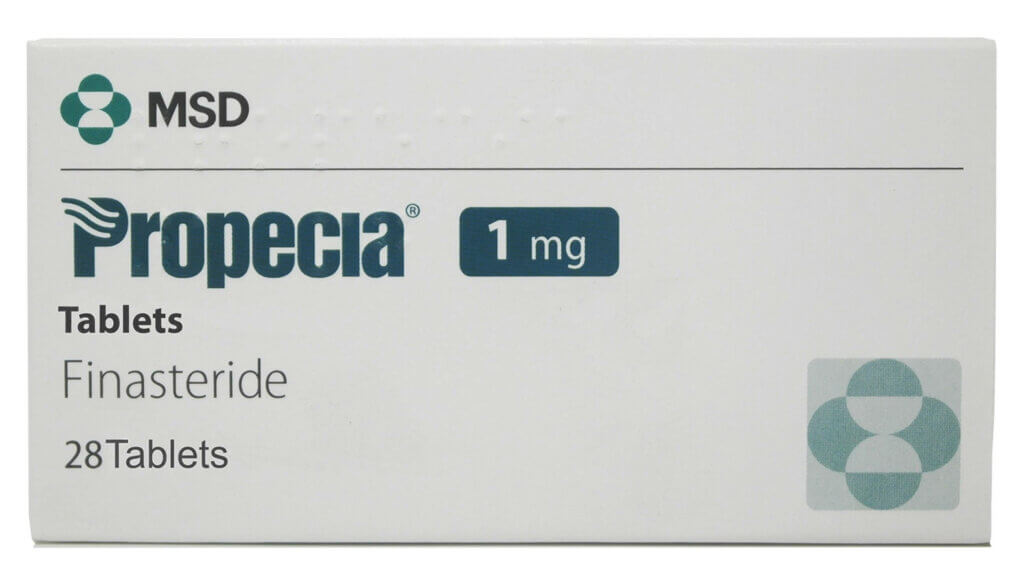
Finasteride is an FDA-approved supplement medication for treating male pattern baldness.
It is an inhibitor drug, meaning that it slows down or reverts hair loss by preventing the production of the hair loss hormone dihydrotestosterone (DHT).
According to studies, it has a rate of promoting hair growth in 66% of patients and altogether preventing further hair loss in 83% of patients.
It should be noted that Finasteride is NOT a one-time solution, meaning that you have to keep using the medication if you want to benefit from its effects.
Lastly, like all medications, Finasteride, too, has a chance to show some side effects. These potential side effects may include rash, erectile dysfunction, and ejaculation disorder. However, they are scarce, temporary, and completely reversible. Simply because, just like the benefits, the side effects disappear once you stop using it.
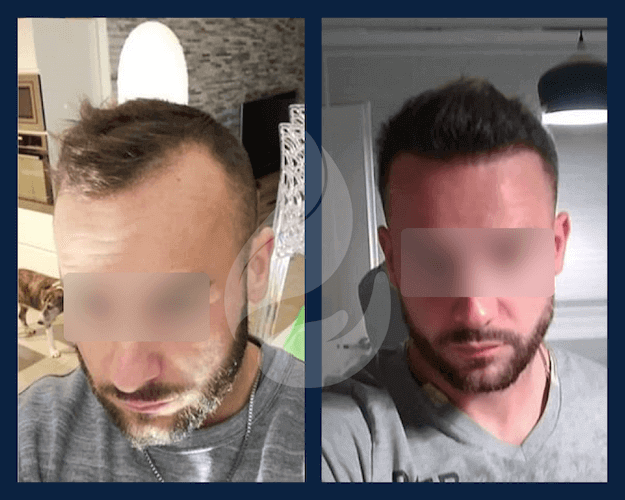
For optimal results, my clinical advice is 1 mg of oral Finasteride daily.
13 – Aloe Vera

Aloe vera, a commonly used plant for medical remedies, contains a large number of beneficial compounds such as lectins, saponins, anthraquinones, and salicylic acid.
Most of these compounds are anti-inflammatory agents that reduce scalp itching and swelling.
In addition, aloe vera also has powerful antioxidant properties to prevent damage caused by free radicals that can cause hair loss.
Due to these active ingredients, this natural remedy has been used for hundreds of years to treat different skin problems, including psoriasis and dandruff.
You can apply Aloe Vera gel on your scalp by massaging it gently with a clean finger or a soft bristle brush, but make sure you don’t scratch your head too hard with your nails. Leave the gel on for about half an hour before you wash it thoroughly with warm water.
14 – Natural Oils
The effects of natural remedies and oils on hair loss never cease to amaze us.
In most cases, they help decrease the hair loss rate by turning your scalp into a healthier version of itself.
In some cases, it even significantly promotes new hair growth to reverse the effects of androgenetic alopecia.
Let’s go over some of the most used oils for the task of stopping hair loss so you’ll have an idea:
Castor Oil
Castor oil is rich in ricinoleic acid, which stimulates blood circulation to the scalp by dilating blood vessels.
Also, it has antibacterial properties to prevent the development of potentially harmful fungi, viruses, and bacteria on your scalp.
So, it can help you eliminate a number of reasons behind your hair loss and promote new hair growth all in one go.
Coconut Oil

Coconut oil is rich in lauric acid, capric acid, and vitamin E, all of which are known to strengthen your hair follicles.
Just like aloe vera, it contains antioxidants to prevent damage caused by harmful free radicals before they even have a chance to attack your hair roots.
In addition, it has stimulant properties that increase blood circulation to the scalp, improving the absorption of nutrients from the bloodstream into the cells. It also promotes the activation of protein receptors on cell surfaces, which stimulate cellular activities — including blood flow and nutrient absorption.
Avocado Oil
Avocado oil has been used for hundreds of years by the Aztecs to promote hair growth and prevent hair loss.
It is rich in vitamins A, B1, B2, D, and E, which help in nourishing the roots of your hair.
It is also a good source of essential fatty acids that strengthen your follicles against damage caused by harmful free radicals, similar to coconut oil and aloe vera.
Rosemary Oil

The oil of this well-known herb has been used by civilizations all over the world for thousands of years as a treatment for different conditions, including respiratory infections, acne, dandruff, and hair loss.
The main active compound in rosemary oil is Carnosic acid, which stimulates blood flow to the scalp and enhances the absorption of nutrients from the bloodstream into cells.
Also, it has antioxidant properties that help your body battle free radicals.
Geranium Oil
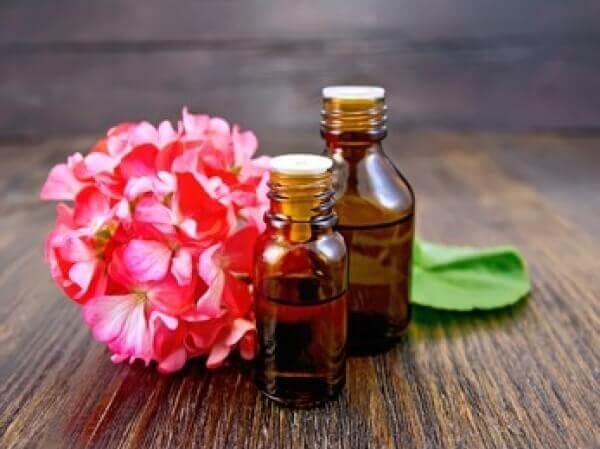
Geranium oil is another home remedy that has been used for many decades to treat different skin and scalp problems, including alopecia.
This powerful essential oil contains a number of chemical compounds such as geraniol, citronellol, linalool, and limonene, all with anti-inflammatory properties that can reduce scalp itchiness and pain associated with baldness.
Using these oils on a regular basis can eliminate most of the reasons that might be aggravating your alopecia.
15 – Protect Your Scalp From the Sun
Your daily routine, your occupation, or your hobbies might end up keeping you under the sun for long periods.
Now, everyone knows too much exposure to sunlight can cause sunburn, and in the long term, it can even cause skin cancer. That’s why most people apply sunscreen to their exposed skin, to protect it from UV lights.
However, most people tend to ignore their scalp. Since it’s covered in hair, they think it’s safe from sunlight, but it’s not.
Sunlight can actually damage the skin cells in your scalp and cause inflammation, harming your hair follicles and causing them to shrink and fall out.
“While too much sun does not lead directly to hair loss, damage to your hair causing it to lose volume and break easily can lead to visible thinning if not treated.”
Source
So you should pay attention to your scalp as well when going out on a sunny day.
The best thing you can do, and that can actually work both ways, is to apply sunscreen to your scalp. I know it sounds weird.
But in addition to protecting your scalp from UV lights, filters used in most sunscreens actually repress the enzymes responsible for producing DHT in your scalp.
So it’s a win-win-win.
16 – Onion Juice
And lastly, perhaps one of the most actionable and easy-to-start tips on the list.
Onion juice.
If you haven’t haven’t heard of onion juice’s juice’s many benefits, which makes it one of the key items for at-home remedies, you might be surprised.
But when you look at the properties of onion and the substances it consists of, you’ll understand why.
Keratin, which is what hair is made of, primarily consists of sulfur.
So, the high amount of sulfur contained in onions makes onion juice one hell of a way to promote hair density and strength by one, extending the lifecycle of a hair follicle and two, enabling hair follicles to produce denser hair.
This study also proves that onion juice helps with hair loss once you apply it to your hair and scalp before washing your hair.
⚠️ Direct use of onion juice might be irritating to the skin. Only use extracts or products containing extracts.
What Is the Next Step?
If you have come this far and read all of the 16 working methods to stop hair loss, you are one step closer to getting back to your natural look.
Hair restoration is a journey and might take a long time if you try to handle everything yourself.
That is why you should also get help from the experts:
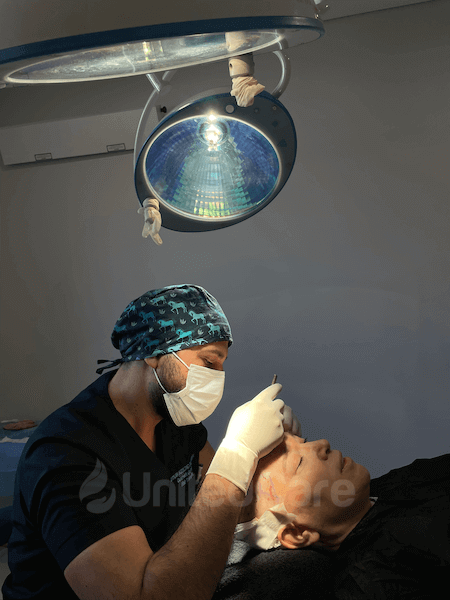
At UnitedCare, we begin your hair transplant process by offering you a free one-on-one consultation with our expert doctors to determine your suitability.
💊 If so, our holistic approach provides advanced technologies and bio-enhancements to ensure you do not need another surgery.
Once you have decided on a method, we begin the treatment with the utmost attention. 💉
But most importantly, we stay in contact with our patients even long after the surgery, ensuring that your transplant becomes permanent. 🍀
Affordable hair transplant costs, a holistic approach, and experienced dermatologists on-site are here to provide you with the right solution.
Ready to begin the journey? Click here to reach out for a FREE consultation:
Do not delay your health. Stop your hair loss today!
UnitedCaUnitedCare’sdermatologists are just one click away:
Frequently Asked Questions (FAQs)
How to Prevent Baldness in Males?
First, we must deduce how much your baldness has progressed. Depending on how much it has progressed, you can use various options to prevent baldness and promote hair regrowth. If you are in the early stages, I suggest natural options such as reducing smoking and alcohol consumption, doing physical exercise, and getting a proper diet. For more progressed balding cases, using certain medications such as Finasteride and Minoxidil or medical treatments such as PRP can be considered with your doctor’s consultation and approval.
Can Bald People Still Grow Hair?
It depends on how much the “baldness” has progressed. If we are talking about a completely empty zone with no hair in sight, then no. In that case, the hair follicles must have been lost, and they do not regrow like hair strands, so a hair transplant is necessary to cover the area. However, if you are experiencing extreme shedding in your early stages of balding, it is possible to stop the balding and regrow your hair with the right methods and proper doctor consultation.
Is Balding Genetic?
Most of the time, yes, hair loss and balding are linked to the genetic condition called androgenetic alopecia. However, regardless of whether the cause is genetic or not, you can still fight baldness by reducing the balding hormone called dihydrotestosterone (DHT) using supplement medications and promoting hair regrowth with natural methods. All you need is a doctor’s consultation.
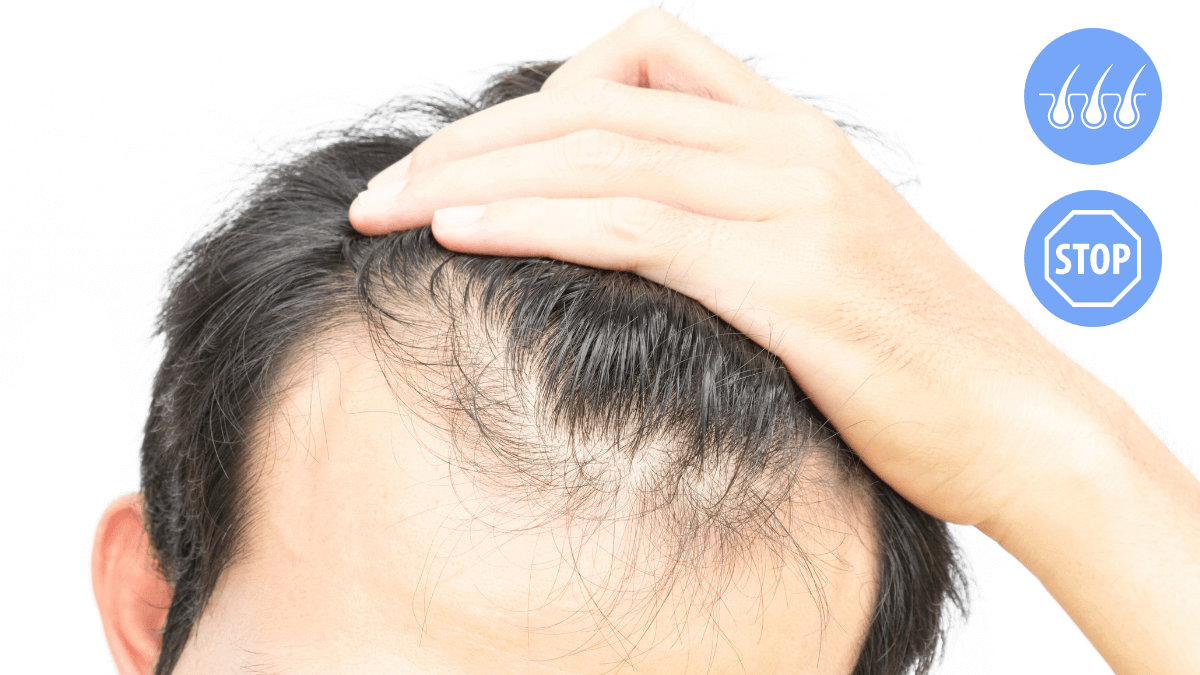
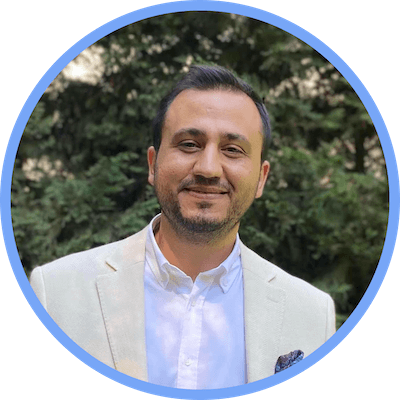
Thank you for everything
Hi Erza,
You’re welcome. Hope the article was helpful.
Best wishes 🍀
Hi
Hello, how can I help you?